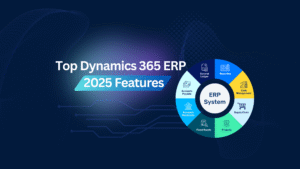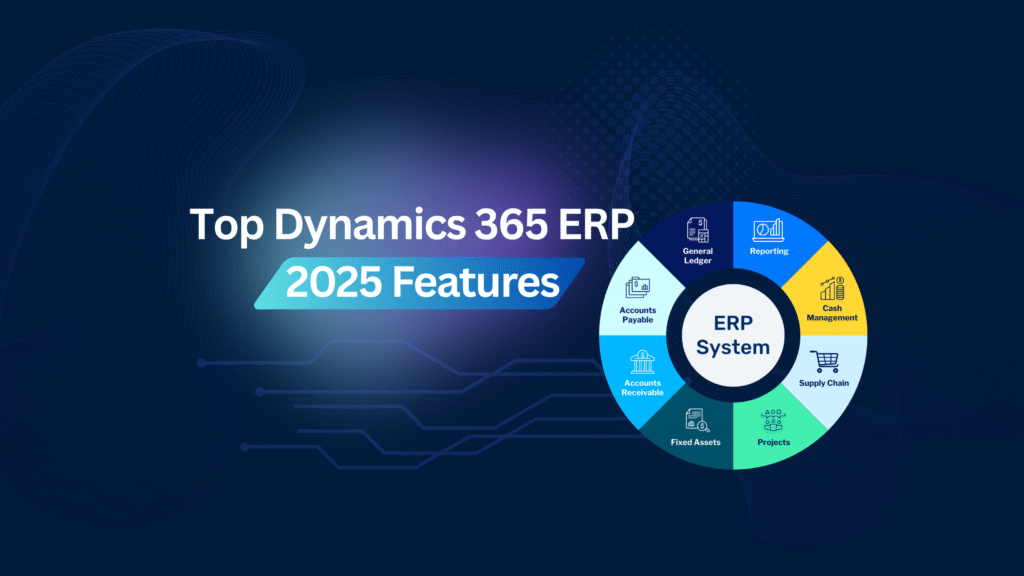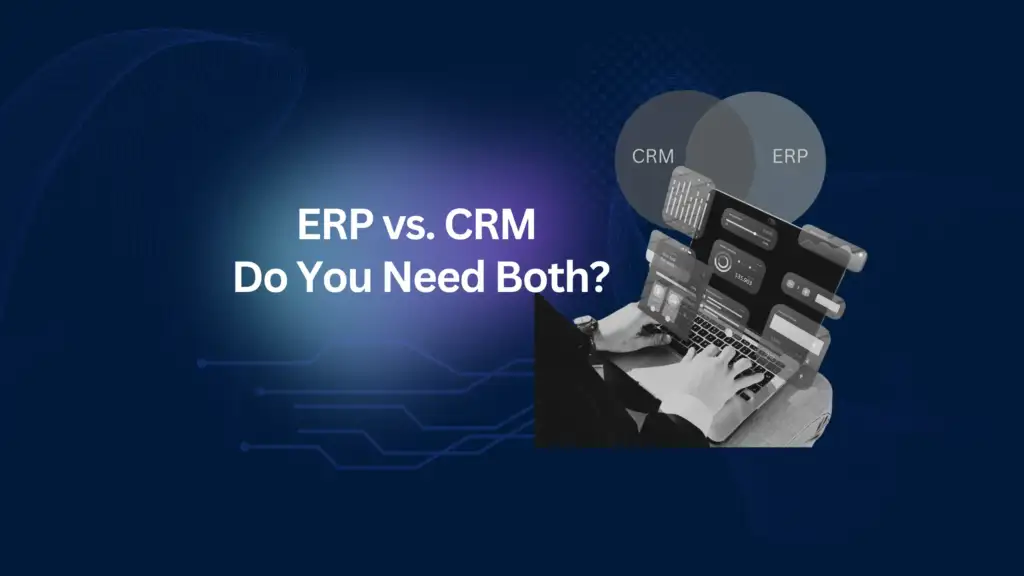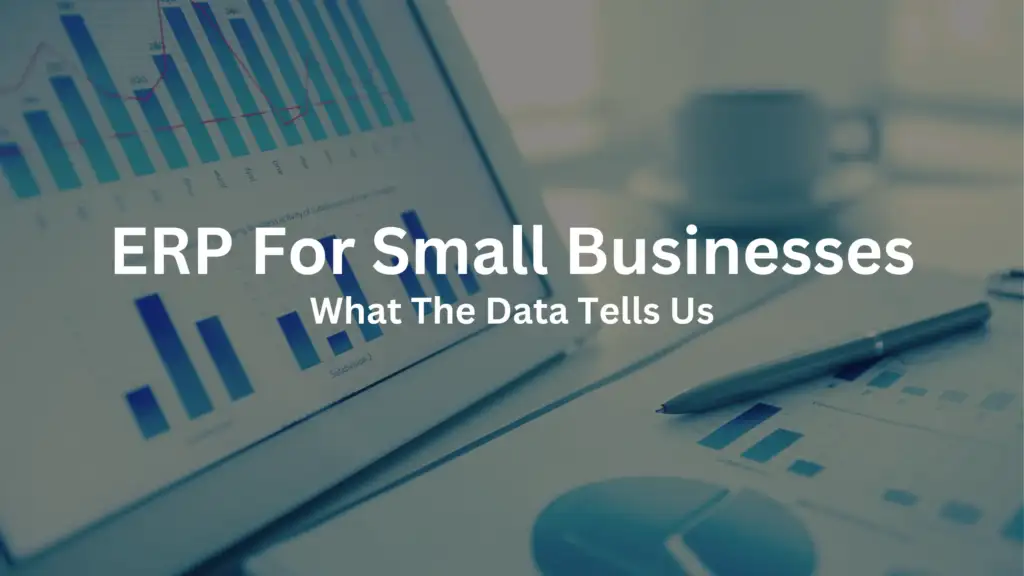Nikoo Samadi
The ERP landscape is evolving fast, and 2025 promises to bring transformative changes. With advancements in AI, cloud-based solutions, and low-code development, businesses will be able to improve their efficiency, adaptability, and security. ERP systems are no longer just about keeping data organized, they’re becoming essential tools that drive business growth, decision-making, and competitive advantage. In this article, we’ll explore the top ERP trends in 2025 and why they matter for businesses looking to stay ahead in an increasingly digital world.
1. AI in ERP: A Leading Trend in 2025
In 2025, Artificial Intelligence (AI) and Machine Learning (ML) will be integral to modern ERP systems. These technologies will transform traditional ERPs into intelligent platforms that enable strategic decision-making by automating routine tasks, enhancing predictive analytics, and providing real-time insights.
AI will help streamline operations within ERP systems by eliminating manual tasks such as categorizing expenses, processing invoices, and updating inventory levels. This reduces human error, speeds up workflows, and frees up employees to focus on more value-driven tasks like planning and strategy. As a result, businesses will become more agile and responsive to changes, improving their overall operational efficiency.
2. Cloud-Based ERP Systems: The Future of Flexibility
Cloud-based ERP systems are quickly becoming the default choice for businesses in 2025. With an increasing number of remote and distributed teams, the flexibility and accessibility of cloud-based solutions are essential.
Cloud ERP systems help growing businesses scale with ease. They eliminate the need for on-site servers, reducing the cost of maintaining physical infrastructure. These systems allow employees to access essential data remotely, facilitating flexible work arrangements and reducing overhead costs. Additionally, cloud ERP solutions typically offer faster implementation times and automatic updates, ensuring that businesses are always using the most up-to-date technology. Though cloud systems may have a higher initial cost, they tend to be more secure than traditional on-premise solutions, offering regular updates and strong cybersecurity measures.
3. Low-Code and No-Code ERP Development: Empowering Non-Technical Users
Low-code and no-code ERP platforms are revolutionizing the way businesses can customize their systems. In 2025, these platforms will enable even non-technical users to design applications and workflows without needing extensive programming knowledge.
With drag-and-drop interfaces and pre-built templates, businesses can quickly adapt their ERP systems to meet evolving needs. For example, HR departments can customize employee onboarding workflows or modify reporting dashboards without involving IT. This significantly reduces reliance on development teams, lowers costs, and empowers business users to make changes directly. As businesses grow, low-code and no-code ERP systems will foster innovation, enabling teams to experiment with new features and tools to improve efficiency and productivity.
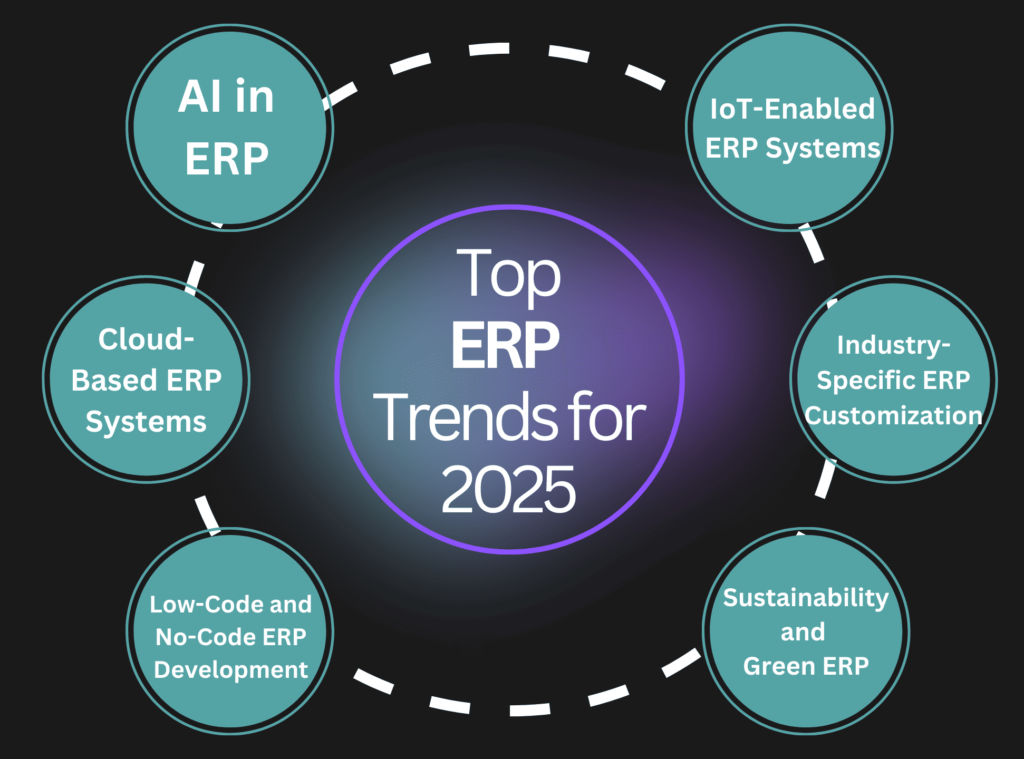

4. IoT-Enabled ERP Systems: Bridging the Physical and Digital Worlds
The Internet of Things (IoT) is transforming how businesses interact with physical devices, and in 2025, IoT-enabled ERP systems will play a major role in improving data collection, analysis, and decision-making.
By integrating IoT devices like sensors and machinery with ERP systems, businesses can access real-time data such as equipment performance, inventory levels, and environmental conditions (e.g., temperature and humidity). This constant flow of data enables organizations to respond to issues faster, optimize operations, and make more informed decisions.
For example, manufacturers can use IoT data to track machine health, predicting maintenance needs before equipment fails. Retailers can monitor stock levels in real-time, reducing the risk of stockouts or overstocking. The combination of IoT and ERP systems will improve decision-making and increase operational efficiency.
5. Industry-Specific ERP Customization: Tailored Solutions for Greater Impact
In 2025, industry-specific ERP solutions will be a key trend as businesses increasingly move away from generic ERP systems in favor of customized tools that cater to their unique needs.
Rather than implementing a one-size-fits-all ERP, industries like manufacturing, healthcare, and retail will invest in ERP platforms designed with specific tools, workflows, and compliance features relevant to their operations. For instance, a healthcare ERP might include patient data management and regulatory compliance features, while a manufacturing ERP could provide tools for supply chain monitoring and production planning.
Industry-specific ERPs reduce the need for heavy customization and streamline the implementation process. By focusing only on what’s important for a specific sector, businesses can achieve faster adoption, greater usability, and a higher return on investment.
6. Sustainability and Green ERP: Supporting Eco-Friendly Business Practices
As sustainability becomes an increasing priority, Green ERP systems are evolving to support businesses’ environmental goals. In 2025, sustainable ERP systems will be crucial for organizations aiming to minimize their carbon footprint, reduce waste, and optimize resource usage.
Green ERP systems integrate sustainability features directly into core business processes, allowing organizations to track their environmental impact in real-time. By using data-driven insights, companies can make decisions that support eco-friendly practices, such as energy optimization, waste reduction, and eco-friendly sourcing. These systems help businesses meet growing environmental and social responsibilities while improving efficiency and reducing costs.
Final Thoughts
The ERP landscape in 2025 is changing, driven by new technologies like AI, cloud-based solutions, low-code development, and green ERP systems. These trends are not just enhancing operational efficiency, they are enabling businesses to adapt more quickly to changes in the market, improve their sustainability efforts, and stay competitive in a fast-paced digital world. Embracing these trends will be key to ensuring long-term success and growth in the years to come.

